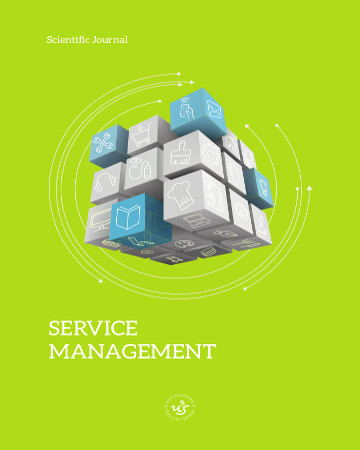
ISSN: 2450-8535
eISSN: 2451-2729
OAI
DOI: 10.18276/ejsm.2018.27/2-16


Lista wydań /
Vol. 27/2, 3/2018
The university and the external environment – towards a collaborative system of resources exchange
| Autorzy: |
Wojciech
Downar
University of Szczecin, Faculty of Management and Economics of Services |
| Słowa kluczowe: | higher education management networks innovations |
| Data publikacji całości: | 2018-12-31 |
| Liczba stron: | 7 (135-141) |
| Klasyfikacja JEL: | I14 I23 O31 |
Abstrakt
Over the centuries, the role of universities and its impact on economic, social and cultural environment has changed. University relations with the main stakeholders: industry (business) and government have been changing from static and laissez faire to balanced configuration. The cooperation of these entities forms what we can call collaborative system of resources exchange. The main objective of collaboration with parties involved is to develop innovative solutions and to get the added value to each party. Value co-creation in a collaborative system depends on the ability to select and reconfigure individual elements in the way in which the emergence of new knowledge in a synergistic process takes place. University to meet the requirements of functioning in a collaborative system must adapt both its strategy (business model) and its internal processes. On the strategic level organizational culture based on dynamism of action, ability to take risks, willingness to change, ability to take advantage of opportunities, search for new ideas and innovation is of crucial importance. On operational level of crucial importance are relations between the process of knowledge production (research), the process of knowledge transfer (education), and the process of application of knowledge (innovation).
Pobierz plik
Plik artykułu
Bibliografia
| 1. | Clark, B.R. (1998). Creating Entrepreneurial Universities. Organizational Pathways of Transformation. Oxford: Pergamon Press. |
| 2. | Etzkowitz, H., Leydesdorff, L. (1998). The Endless Transition: A ‘Triple Helix’ of University – Industry – Government Relations. Minerva, 36, 203–208. |
| 3. | Etzkowitz, H., Leydesdorff, L. (2000). The dynamics of innovation: from National Systems and ‘Mode 2’ to a Triple Helix of university–industry–government relations. Research Policy, 29, 109–123. |
| 4. | Etzkowitz, H. (2008). The Triple Helix: University – Industry – Government Innovation in Action. Abingdon: Routledge. |
| 5. | Greer, C., Lei, D. (2012). Collaborative innovation with customers: a review of the literature and suggestions for future research. International Journal of Management Reviews, 14 (1), 63–84. |
| 6. | Grichting, W.L. (1995). The Knowledge Triangle and Australian Universities. Education and Society, 13 (2), 63–75. |
| 7. | Hughes, T. (2014). Co-creation: moving towards a framework for creating innovation in the Triple Helix. Prometheus, 32 (4), 337–350. |
| 8. | Lassnigg, L., Hartl, J., Unger, M., Schwarzenbacher, I. (2017). Higher Education Institutions and Knowledge Triangle: Improving the interaction between education, research and innovation. Wien: Institut für Höhere Studien (IHS), Abt. Soziologie, 118. |
| 9. | Leja, K. (2013). Zarządzanie uczelnią. Koncepcje i współczesne wyzwania. Warszawa: Oficyna a Wolters Kluwer business. |
| 10. | Nielsen, B.B. (2000). Synergies in Strategic Alliances: Motivation and Outcomes of Complementary and Synergistic Knowledge Networks. Working Papers from Copenhagen Business School, 4, 7. |
| 11. | Vargo, S.L., Lusch, F.R. (2004). Evolving to a New Dominant Logic for Marketing. Journal of Marketing, 68, 1–17. |
| 12. | Vargo, S., Lusch, R. (2008). Service-dominant logic: continuing the evolution. Journal of the Academy of Marketing Science, 36, 1–10. |
| 13. | Waltoś, S., Rozmus, A. (ed.) (2012). Szkolnictwo wyższe w Polsce. Ustrój, Prawo, Organizacja. Kraków, Rzeszów, Zamość: Konsorcjum Akademickie. |